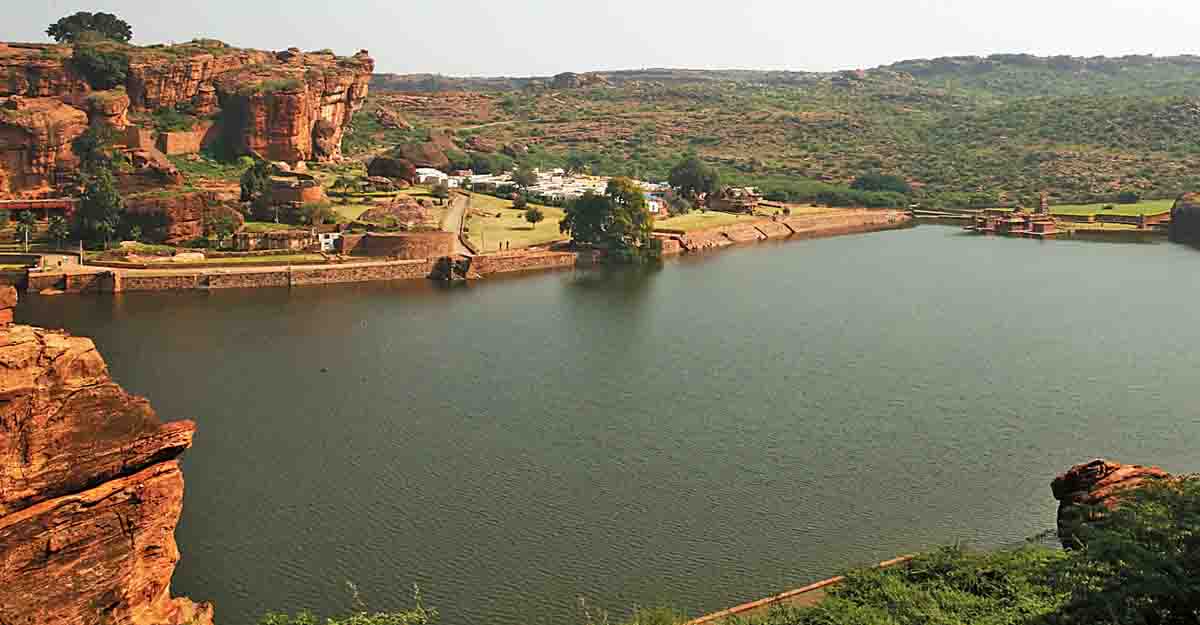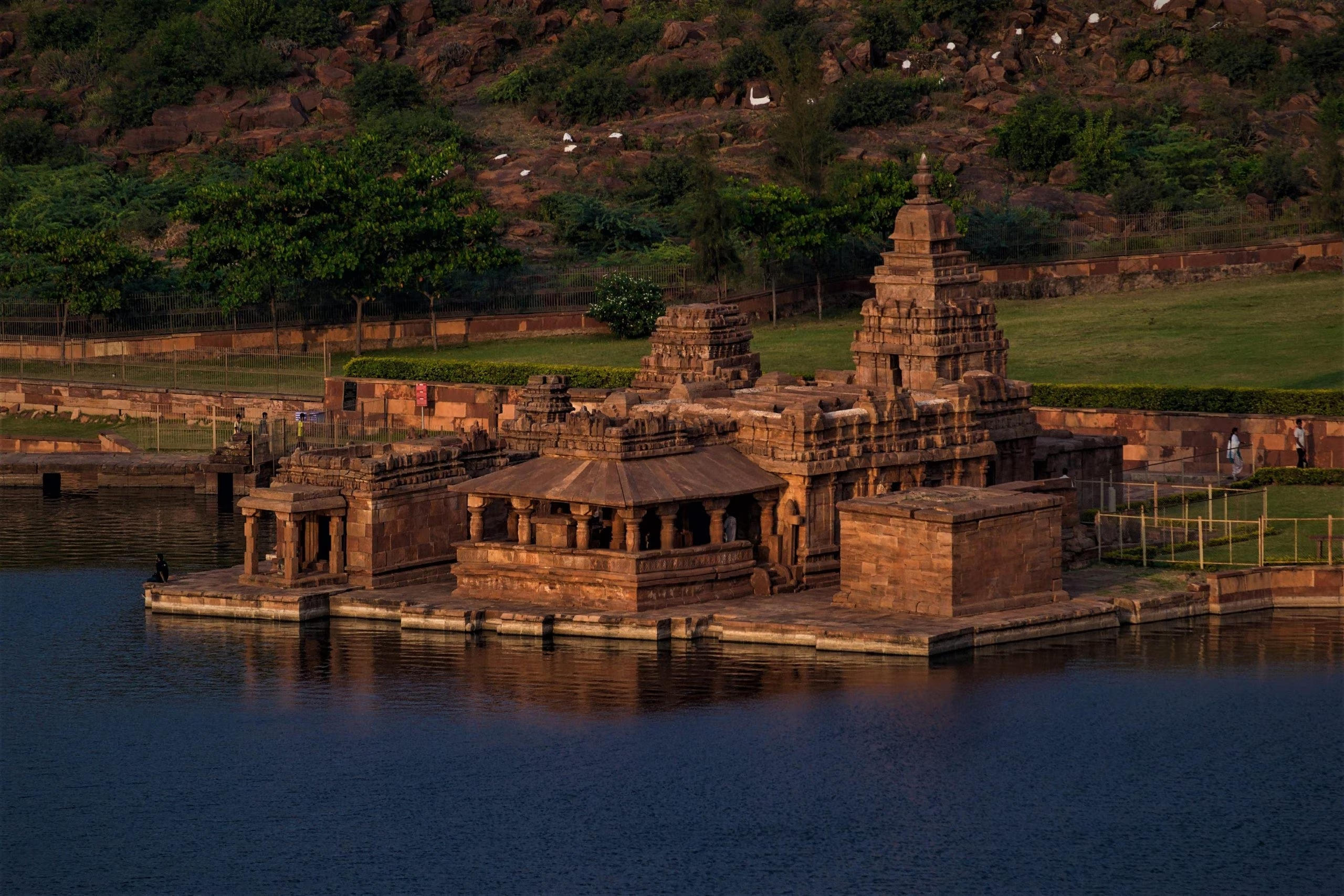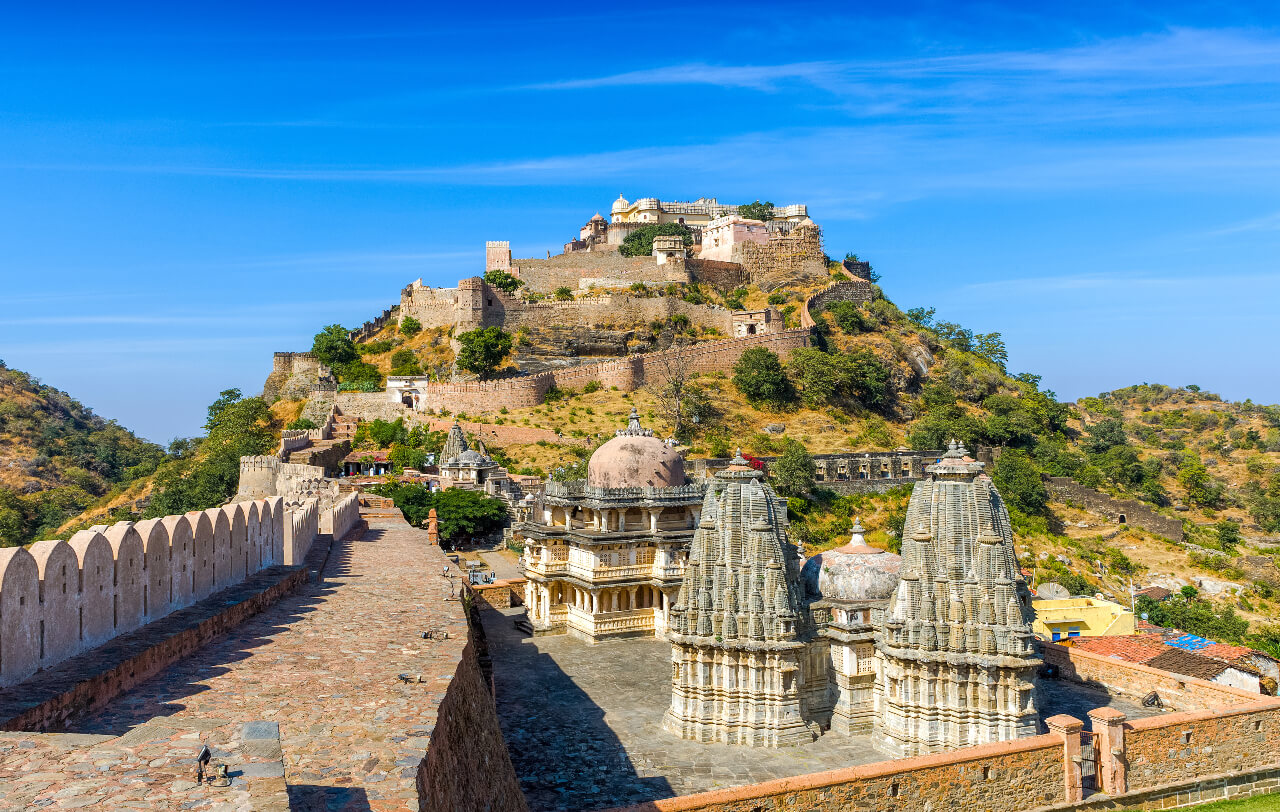Badami cave temples
Badami CavesThe Badami Caves are an architectural and historical marvel located in northern Karnataka, known for their ancient rock-cut temples carved into sandstone cliffs. These caves date back to the 6th century and are among the most important examples of Indian rock-cut architecture. The four main caves are dedicated to Hindu deities, with intricate carvings, sculptures, and frescoes depicting scenes from Hindu mythology. The Badami Caves attract history enthusiasts, architecture lovers, and spiritual seekers, offering breathtaking views of Agastya Lake and the surrounding hills, making them a must-visit site in Karnataka.Badami Cave TemplesThe Badami Cave Temples are a series of rock-cut sanctuaries that highlight the architectural brilliance of the Chalukya dynasty. These four temples are carved directly into the cliffs of Badami hills, each dedicated to different deities like Vishnu, Shiva, and Jain figures. The most famous is the third cave, devoted to Vishnu, showcasing stunning carvings of the god in various forms. The intricate work of sculptors and the spiritual significance make the Badami Cave Temples an important destination for tourists interested in history and art.Badami CaveThe Badami Cave system consists of four main caves, each unique in its religious and architectural significance. These caves represent a fusion of North Indian and South Indian styles, combining spiritual iconography with artistic mastery. The carvings in the Badami Cave are detailed and vibrant, depicting scenes from Hindu mythology and Jainism. Visitors can marvel at the depictions of Nataraja (Shiva in a dancing pose), Varaha (the boar incarnation of Vishnu), and other intricate figures. The peaceful environment of the caves adds to their allure.Badami Caves PaintingsThe Badami Caves paintings are an often-overlooked feature of the rock-cut temples. These murals, found primarily in Cave 3, are a testament to the artistic prowess of the Chalukya period. The paintings depict various mythological scenes, including the life of Vishnu, and are considered some of the earliest examples of South Indian frescoes. Though many of the original Badami Caves paintings have faded over time, visitors can still witness the vibrant colors and intricate designs that showcase the cultural richness of the era.Cave Temple BadamiThe Cave Temple Badami complex is an extraordinary example of rock-cut architecture. These temples are divided into four main caves, each dedicated to a different deity or religious tradition, with Cave 1 focusing on Lord Shiva and Cave 3 on Lord Vishnu. Carved out of red sandstone, the Cave Temple Badami structures are filled with intricate carvings, statues, and frescoes that depict mythological events and religious iconography. The peaceful atmosphere and stunning art make these temples a popular destination for both spiritual pilgrims and art lovers.The Cave Temples at Badami are Built UsingThe cave temples at Badami are built using sandstone, which is abundant in the surrounding region. This soft, reddish stone was carefully carved by skilled artisans during the Chalukya dynasty to create the intricate sculptures, pillars, and figures that adorn the caves. The temples were built as rock-cut structures, meaning they were carved directly into the cliffs of Badami hills rather than constructed from separate stones. This method showcases the remarkable engineering and artistic skills of the time, creating enduring monuments to religious devotion.Badami Caves KarnatakaThe Badami Caves Karnataka are a UNESCO-recognized historical site that draws visitors from around the world. Located in northern Karnataka, these caves offer a glimpse into the religious and architectural advancements of the 6th century under the Chalukya dynasty. The temples, carved into sandstone cliffs, are dedicated to Hinduism and Jainism, with intricate sculptures and carvings representing gods, animals, and mythological scenes. The Badami Caves Karnataka are a vital part of India’s cultural heritage, making them a must-see destination for history and art enthusiasts.Badami TemplesThe Badami temples are primarily known for their rock-cut structures, blending spiritual themes with artistic brilliance. In addition to the cave temples, Badami temples include structures like the Bhutanatha Temple, situated near Agastya Lake, which is dedicated to Lord Shiva. These temples reflect the rich history of the region and showcase various forms of Indian temple architecture. Visitors can explore not only the intricate carvings of the caves but also the impressive structures outside, offering a comprehensive experience of Badami’s religious and architectural legacy.Badami Caves Built ByThe Badami caves were built by the Chalukya dynasty in the 6th century. Specifically, they were constructed under the reign of King Mangalesha, a ruler known for his patronage of art, culture, and religion. The Chalukyas were instrumental in advancing temple architecture in southern India, and the Badami Caves stand as a testament to their legacy. These caves, carved into the red sandstone cliffs, feature impressive sculptures and frescoes that continue to attract historians and tourists alike, showcasing the advanced artistic skills of the Chalukyan era.Badami Cave PaintingsThe Badami cave paintings add another layer of artistic brilliance to the cave temples. Though many have been worn down by time, these early frescoes, especially in Cave 3, depict Hindu mythological scenes, including life stories of Lord Vishnu. The colors and techniques used in the Badami cave paintings are evidence of advanced artistry during the Chalukyan period, making them an essential aspect of the site’s cultural significance. Visitors today can still admire the remnants of these vibrant murals, offering a unique glimpse into ancient Indian art.Badami Caves HistoryThe Badami Caves history dates back to the 6th century when the Chalukya dynasty ruled over much of Karnataka. These caves were carved into sandstone cliffs as part of the Chalukyan king’s vision to create religious monuments dedicated to Hinduism and Jainism. The Badami Caves reflect a significant shift in temple architecture and represent some of the earliest examples of rock-cut temples in South India. The history of these caves is also intertwined with the town’s development as a political and cultural hub during the Chalukya period.Badami Cave Temples Badami KarnatakaThe Badami Cave Temples Badami Karnataka are an architectural marvel located in the town of Badami, known for their intricate rock-cut sculptures. Built during the Chalukya dynasty, these temples are significant for their artistic depiction of Hindu gods, including Shiva










